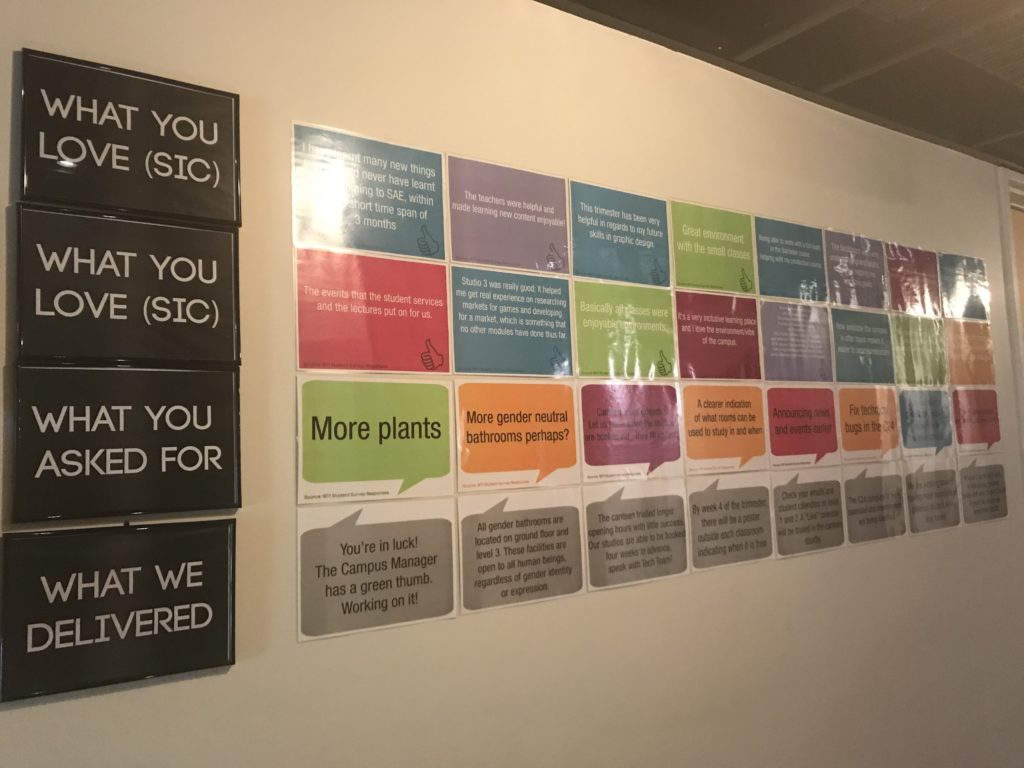The student voice: Moving beyond end of semester feedback

The student voice is an important part of a student-centred environment. Quite often student feedback is captured at the end of a semester, but by this time it’s already too late for that feedback to have any impact on the students who originally provided the feedback.
How can we capture the student voice much earlier in the semester so that the students giving the feedback benefit? Are there other tools we could use to capture student voice? What can we do with the feedback so that students feel they are being listened to?
The ideas shared in this article were generated by members of the Learning & Teaching Educational Development (Ed Dev) meeting. The Ed Dev meetings are a forum for leaders in teaching across all divisions of Navitas to discuss issues, challenges and innovations through professional dialogue.
How is the student voice being captured?
Here are the various strategies and tools that some Navitas staff are using to capture the student voice across our diverse student cohort.
- Moodle discussion forum
- Moodle polls
- Moodle private blogs
- End of lesson surveys: Survey Monkey, Socrative, Doodle Poll
- Class rituals: Teachers ask students what they need from the teacher at the end of every class
- Slack: mobile app. that enables collaboration and communication outside of class
- Feedback jars
- iPads/tablets near the class entrance
- Student interviews
- Focus groups
- Learner journals
- Stop, Start, Continue feedback worksheet
- Post-it notes
- Student representatives
Feedback in action
The feedback wall
Here is an example from the SAE Institute in Brisbane showing how they share feedback with their students. The ‘feedback wall’ addresses the following questions: what you love? what you asked for, and what the campus delivered.
Examples of what students love:
The events that student services and the lectures put on for us.
It’s a very inclusive learning place and I love the environment/vibe of the campus.
This trimester has been very helpful in regard to my future skills in graphic design.
Examples of what students asked for and how the campus responded:
- More plants: “You’re in luck! The Campus Manager has a green thumb. Working on it!”
- A clearer indication of what rooms be used to study in and when: “By week 4 of the trimester, there will be a poster outside each classroom indicating when it is free.”
- Gender neutral bathrooms: “All gender bathrooms are located on ground floor and level 3. These facilities are open to all human beings, regardless of gender identity or expression.”
Unit outline feedback
Here is another example from Curtin College. In the Academic, Research & Writing unit, they show how student feedback informs changes to the unit to better meet the needs of the students themselves.
Things to consider when asking students to provide feedback
- It should be voluntary.
- The purpose of the feedback should be clear to students.
- Students should feel comfortable and safe providing feedback.
- If there are cultural sensitivities around providing feedback, staff should try to offer alternative channels for students to have their say.
- Feedback mechanisms need to be quick and easy to complete (students do suffer from survey overload just like the rest of us).
- We need to be prepared to hear things we might not expect and be willing to keep an open mind.
- The results and any follow-up action needs to be shared with the students to show that their feedback has impact.
- The process needs to be transparent to encourage students to think of themselves as co-creators of knowledge.
If you are interested in being a part of an Ed Dev meeting group in the US, Europe or Australasia please contact Learning and Teaching Services.
[This story was produced in collaboration with Ron Blaber, Alison Black, Kirsten Clarke, Ellen Cooper, Pauline Farrell, Perry Horner, Akshay Kalawar, Niva Kaspi, Bronwyn Mortimer, Karen McRae, Ges Ng, Jen Ng, Anselm Paul, Danielle Rock and Santina Sculli]


